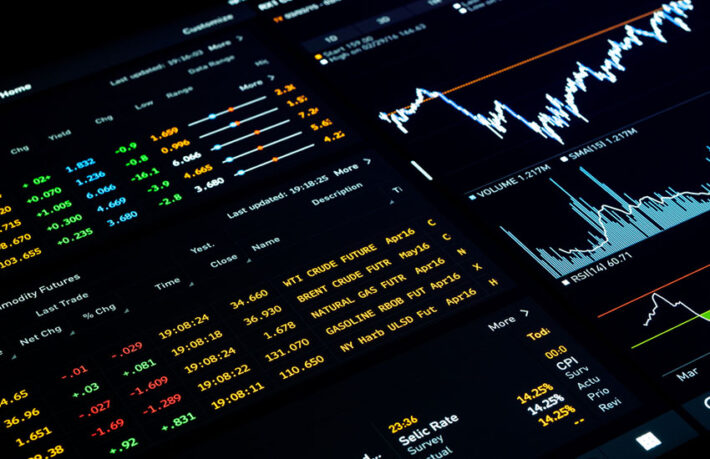Unraveling ETFs: A Complete Guide for Investors
Entering the world of stock market investing involves familiarizing yourself with a wealth of terminology and understanding the nature of the various financial instruments available. Among these, ETFs (Exchange-Traded Funds) have gained significant prominence, sparking growing interest among investors of all levels. The recurring question, “What is an ETF?” underscores the need for a clear and detailed understanding of this financial product. In this context, we will explore in depth the essence of ETFs, the different types that exist, and the key considerations for investing in them in an informed and secure manner.
What Is an ETF in the Financial World?
ETFs, or exchange-traded funds, represent a category of financial assets that exhibit a dual operational nature. On one hand, when traded, they behave similarly to stocks—trading on stock exchanges and being bought and sold during market hours. On the other hand, their internal structure resembles that of a mutual fund, as each ETF groups together a diversified collection of underlying assets.
The primary function of an ETF is to replicate the performance of a specific benchmark index, whether it be a broad stock index, a particular economic sector, a geographic market, or even a basket of securities with common characteristics. In this way, by acquiring a share in an exchange-traded fund, the investor gains exposure to all the components that make up that underlying index or basket, all through a single transaction.
However, before delving into the operational details of ETFs, it is worth exploring the range of investment alternatives available on the market. This overview will allow investors to discern which type of instrument best aligns with their financial objectives and risk tolerance.
A Look at Available Investment Alternatives
Once the decision to participate in the investment market has been made, the next crucial step is to determine the modality through which the investment will be made. At this point, online trading emerges as a predominant methodology, although a thorough understanding of it is often elusive.
In the past, investing required the intermediation of a financial advisor, either by telephone or through personal meetings. Today, technology has democratized access to the markets, allowing investors to execute trades with just a few clicks through web platforms or mobile applications provided by brokers.
Below is an overview of the main investment alternatives that can allow capital to generate returns:
Stocks
Stocks are the most traditional form of investment. They represent a fraction of a company’s share capital, giving the holder the right to participate in the company’s annual profits. In this way, investors can earn profits both from changes in the market price of the stock and from the distribution of dividends that the company may generate periodically.
Cryptocurrencies
Cryptocurrencies have burst onto the financial scene as a disruptive trend with significant staying power. Emerging as a response to the growing digitization of the economy, these virtual currencies are not backed by physical assets, but by market confidence and acceptance. While their volatility can be considerable, they also offer the possibility of high returns and have been gaining ground in everyday transactions.
Currencies
Currency investment, or forex trading, involves speculating on fluctuations in exchange rates between different currencies, such as the US dollar and the Colombian peso or the euro. Profits in this type of trading are derived from correctly predicting the direction in which the relative value of one currency will move in relation to another.
Metals
For investors who prefer tangible assets, the market offers the possibility of investing in precious metals such as gold and silver. In this case, the return on investment is linked to changes in the price of these metals, which are influenced by factors such as supply, demand, and risk perception in global markets.
Delving Deeper into ETFs: Definition and Mechanisms of Operation
Once the various investment avenues have been explored, it is time to refocus on the definition of an ETF. Exchange-traded funds are composed of a variety of underlying assets, whose specific composition varies depending on the basket or index they replicate. In other words, each ETF is made up of different components that determine its risk and return profile.
In addition to their dual functionality as investment funds and stocks, ETFs use three main methodologies to replicate the performance of their benchmark index:
Physical Replication
In this strategy, the ETF manager acquires all of the shares or other assets that make up the underlying index. This method is usually the most effective in minimizing tracking error, which is the difference between the performance of the ETF and that of its benchmark index.
Sampling Replication
Here, the manager selects a representative sample of the assets that make up the index. While this technique can increase tracking error, it significantly reduces transaction costs.
Synthetic Replication
In this case, the investment fund enters into a derivative contract (swap) with a bank. The bank agrees to pay the return on the index in exchange for a fee. Synthetic replication may involve greater counterparty risk but often reduces costs and tracking error.
The choice of replication method depends on the characteristics of the underlying index, the liquidity of its components, and the specific objectives of the exchange-traded fund.
What Types of ETFs Are There?
The ETF market is constantly expanding, with new exchange-traded funds appearing all the time. However, some types have already established their popularity among investors:
- Income ETFs: Divided into two main subcategories:
- Equity: These replicate the performance of global stock markets.
- Fixed income: These track the performance of long-term debt assets.
- Inverse ETFs: Designed to replicate the inverse performance of a benchmark index.
- Leveraged ETFs: Seek to amplify the gains (and losses) of a stock market index through the use of financial leverage.
- Money Market ETFs: Based on assets traded between banks or short-term debt assets.
- Commodity ETFs: Allow investment in raw materials such as sugar, oil, gas, coffee, or precious metals like gold.
- Other Types of ETFs: Include sector ETFs, management style ETFs, and capitalization ETFs.
The key for investors is to select the ETF that best suits their risk profile, investment objectives, and time horizon.
Important Aspects When Investing in ETFs
When venturing into ETF investing, it is essential to analyze several factors that can significantly influence the performance and suitability of these funds for a specific portfolio:
- Commissions: Some brokerage firms may charge commissions for ETF trading. Evaluating the broker’s fee structure is crucial.
- Spreads: The spread between the bid and ask price affects return, especially in less liquid ETFs.
- Premiums and Discounts: These occur when the ETF’s market price deviates from its NAV.
- Overall Liquidity: A liquid ETF ensures ease of trading and narrow spreads.
- Market Volatility: Volatility can affect premiums, discounts, and the ETF’s trading price.
Advantages and Disadvantages of Incorporating ETFs into a Portfolio
Advantages
- Diversification: ETFs offer exposure to a broad range of assets with a single investment, helping reduce risk across sectors, regions, or styles.
- Transparency: Prices update in real time, and holdings are typically disclosed daily, offering clarity and control for investors.
- Liquidity: ETFs trade like stocks, allowing intraday buying and selling with fewer restrictions than mutual funds.
- Accessibility: Most ETFs have no minimum investment, making them ideal for investors with limited capital.
Disadvantages
- Tracking Error: ETFs may underperform their benchmark due to fees, replication methods, or low asset liquidity.
- Over-Diversification: Including too many underperforming assets in an index can dilute the performance of stronger ones, limiting returns.
ETF Trading: Strategies and Platforms
One of the most common ways to trade ETFs is through CFDs (Contracts for Difference). CFDs allow you to speculate on ETF price movements without owning the actual asset. Choosing the right trading platform is crucial—security, features, and costs matter.
Trading typically involves selecting the ETF, the number of shares, and whether to go long or short. Keep in mind the expense ratio, a fee deducted from returns.
Dividends and ETFs: Obtaining Additional Returns
By investing in ETFs that hold dividend-paying companies, investors may receive dividend payments proportionally. These can be reinvested or withdrawn. Dividend-yielding ETFs offer a way to optimize returns and diversify income streams.
Conclusion
In summary, ETFs have emerged as a cornerstone of the modern investment landscape. Their ability to blend the attributes of stocks and mutual funds makes them versatile, efficient, and accessible tools. With careful selection and strategic integration, ETFs offer investors the opportunity to diversify portfolios, manage risk, and pursue their financial goals with greater precision.
The continued evolution of the ETF market, including the rise of actively managed ETFs, reflects the growing sophistication and importance of this asset class in global finance.


